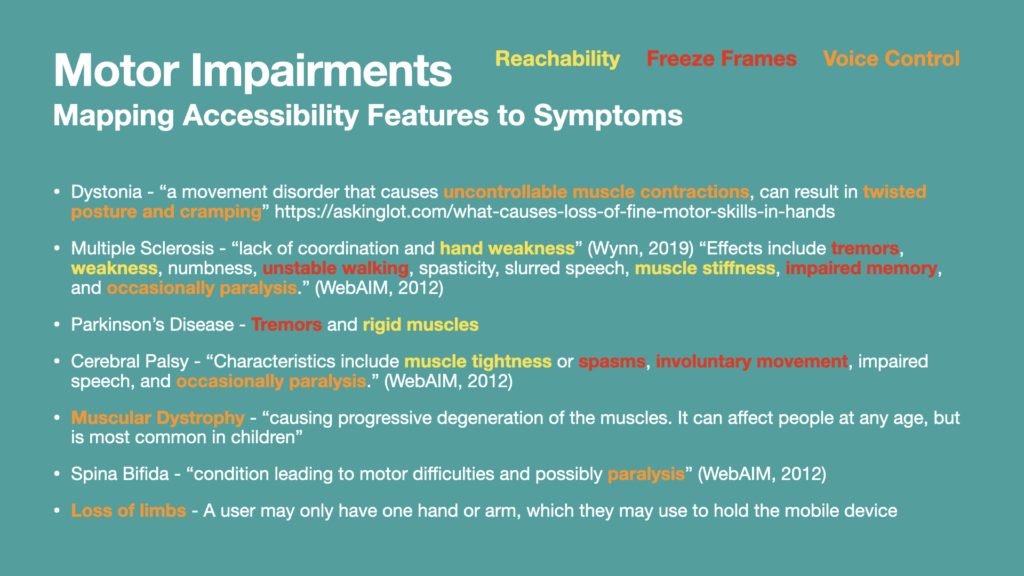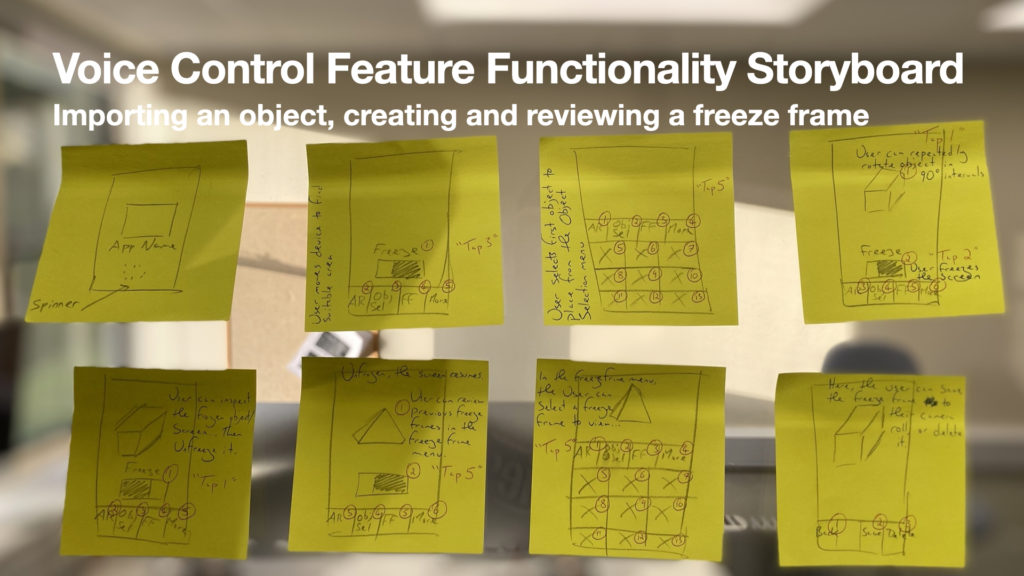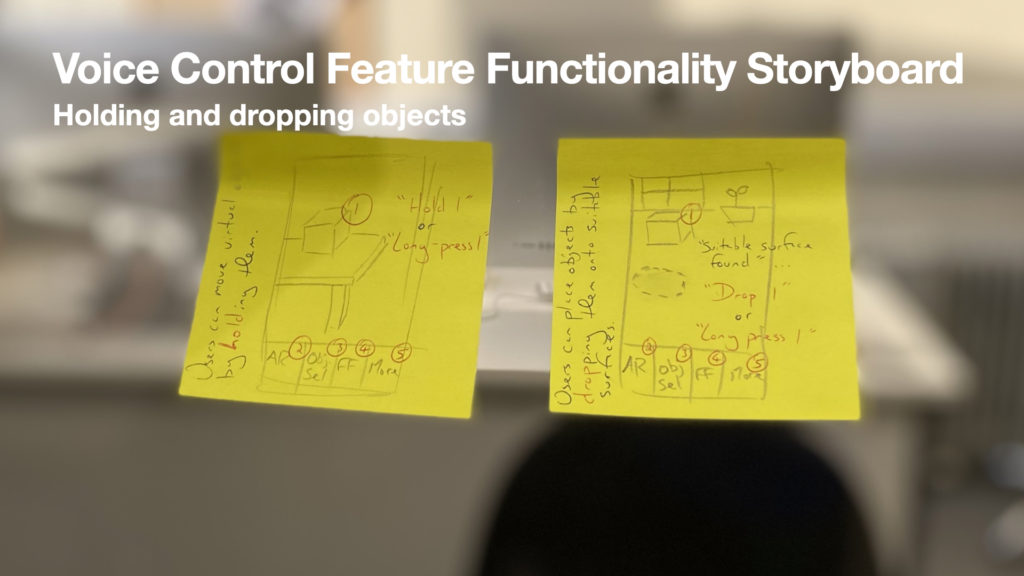This week I’ve been reflecting upon my strategy for addressing accessibility within the Multimedia Centre AR app. My research of existing AR applications and previous studies on accessibility within AR have revealed a wide scope for learning within this module. However, I have noticed that I’m feeling more drawn to addressing motor impairments within mobile application design. Some early considerations such as reachability and the creation of ‘freeze frames’ appear to be pointing towards an interest in resolving issues for users with motor impairments, so I’ve decided to lean into this. My strategy is that deep-diving into one area of learning will allow me to develop a deeper understand of it, as opposed to attempted to skim across the surface of many accessibility areas, such as tackling motor, vision, auditory, cognitive, etc impairments all in one project.
In some early wireframes that I have created, I considered the reachability of navigational elements and other interactive artefacts within the user interface. This will benefit many everyday users who cannot reach all areas of their screen with one hand. However, it could even be seen a revolutionary for users who only have full use of one arm, or users who suffer from an arthritic illness. By demonstrating how the “Freeze” functionality coined by Herskovitz et al. could be implemented into an AR application, I intend to increase accessibility to users who live with tremors or involuntary movements such as muscle spasms.



From my research I have found that there are a large variety of motor impairments that users could suffer from. Each of these impairments is characterised by a range of symptoms, which may not be the same for everyone. In the Keynote slide pictured below, I have identified many symptoms, including tremors or stiffness of muscles, paralysis, changes in posture, loss of limbs, or muscle degeneration. I’ve also categorised some of these symptoms by accessibility functionalities that I intend to build into the prototypes, ascertained from my earlier study of research papers.
Viewing motor impairments in this way has shown me that there’s quite a wide scope of challenge for developers who are looking to make their applications more accessible to these users. However, by categorising these symptoms, it looks as though catering for users who live with such impairments is a bit more manageable.

This week I’ve also taken a look into how different mobile operating systems, such as Android, have been accommodating for users with motor impairments. Within the screenshot below, I’ve recorded some tips that Android have provided to developers. I’m particularly keen on exploring the Voice Access / Voice Control functionality, which allocates numbers to each interactive on-screen element (such as buttons). I know this functionality is also present on Apple’s iOS devices, so I feel it’s an industry standard, which users with motor impairments may already understand the functions behaviour. I’ve produced a early visualisation of how voice access functionality could be integrated into the Multimedia Centre AR application below, and I’m considering how I could prototype this and produce a suitable usability test.


References
Herskovitz, J., Wu, J., White, S., Pavel, A., Reyes, G., Guo, A. and Bigham, J. (2020). Making Mobile Augmented Reality Applications Accessible. ASSETS ’20: International ACM SIGACCESS Conference on Computers and Accessibility. [online] Available at: https://dl.acm.org/doi/10.1145/3373625.3417006 [Accessed 26 Sep. 2021].
Ingram, S. (2016). The Thumb Zone: Designing for Mobile Users. [online] Smashing Magazine. Available at: https://www.smashingmagazine.com/2016/09/the-thumb-zone-designing-for-mobile-users/ [Accessed Oct. 2021].
WebAIM (2012). WebAIM: Motor Disabilities – Types of Motor Disabilities. [online] Webaim.org. Available at: https://webaim.org/articles/motor/motordisabilities [Accessed 28 Oct. 2021].
Wynn, P. (2019). How to Improve Fine Motor Skills Affected by Neurologic Disorders. [online] Brainandlife.org. Available at: https://www.brainandlife.org/articles/a-loss-of-fine-motor-skills-is-a-common-symptom/ [Accessed 26 Oct. 2021].